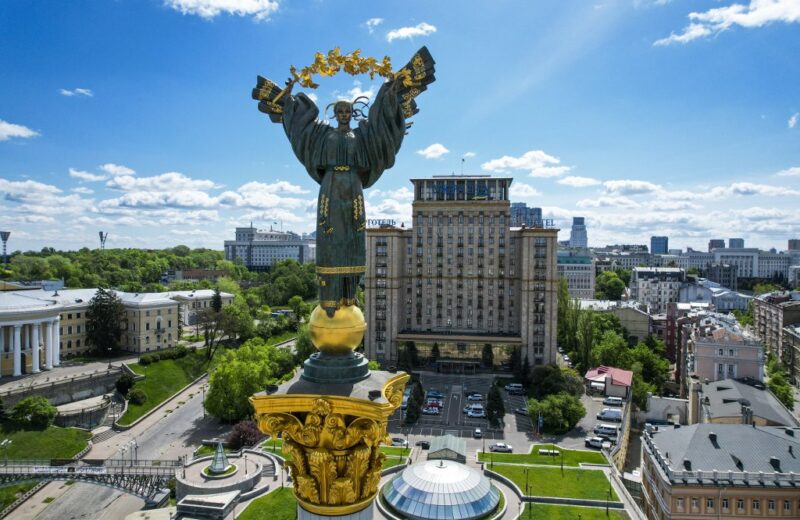Only weeks ago, Kyiv’s central Khreschatyk Street felt like an empty place, with shops shuttered and many of the city’s residents clamoring to escape a city they feared would be besieged and attacked. I wrote about life in our capital city in one of my first articles about the war, as you may recall.
Today, after their early spring hesitancy, the chestnut trees are blooming once again, as spring pushes tentatively into summer. The streets are filling with people, while cafes and shops are gradually re-opening.
But this does not mean that life has returned to normal or that the war is over for the people who call this wonderful place home.
Rockets and the ominous wail of the air raid siren continue to taunt Kyiv every day. Some projectiles are shot down, perhaps as they seek to target the city’s infrastructure, or worse – people’s homes. In other cases, they get through.
The last time a rocket arrived in the city was on April 28. The assumed target, a civilian building. As a result of the shelling, my colleague, Radio Liberty journalist Vira Gyrych, lost her life.
Recently, Kyiv Mayor Vitaliy Klitschko announced the impending arrival of new air defenses for the capital. And only now has he allowed, or rather called on, Kyivites to return.
There are several things to consider here. The danger remains, and the mayor understands this. But today, the visible threat from the enemy is much lower than it was in March, when Ukraine had less equipment. Back then, we saw hits on infrastructure, military and civilian objects several times a week. But we all understand that business – and life – must eventually go on.
Everyone is now contributing to Ukraine’s future victory. Our brave military is our greatest success story because they are our primary defenders. Our many volunteers find what they need and deliver. Meanwhile, tax-paying businesses continue to contribute to the state treasury, supporting the country to buy all-important weapons to defend freedom and democracy.
According to the latest data, half of those who left at the beginning of the war have already returned to the capital. Most catering establishments, shops and other service businesses such as hairdressers are also open once again.
Transportation has almost completely resumed its work, although public transportation across bridges remains prohibited. However, trolleybuses and the city’s underground metro run efficient services.
While I’m talking about Kyiv, let’s consider the wider region, including those cities that had were under Russian occupation for more than a month. Their names are now synonymous with some of the most brutal war crimes. Bucha, Irpin, Vorzel or Borodyanka – you’ll no doubt have heard of some, if not all of these places.
Today, the supply of water, electricity, mobile communication and internet services across the Kyiv region has been largely restored. Bridges and roads are being rebuilt. Blockages are still being dismantled but settlements are already being prepared for new construction.
People are also returning – at least, those who are lucky enough to have place to return to. We remember of course that most of Borodyanka, among other cities of course, has been virtually destroyed.
But Kyiv, like the chestnut trees, is seeing new life. Ukraine will rise. And the country will be even stronger than it was before, with strong values and a deep understanding of its cultural identity and place in the world.
We just have to win. And win, we will.



